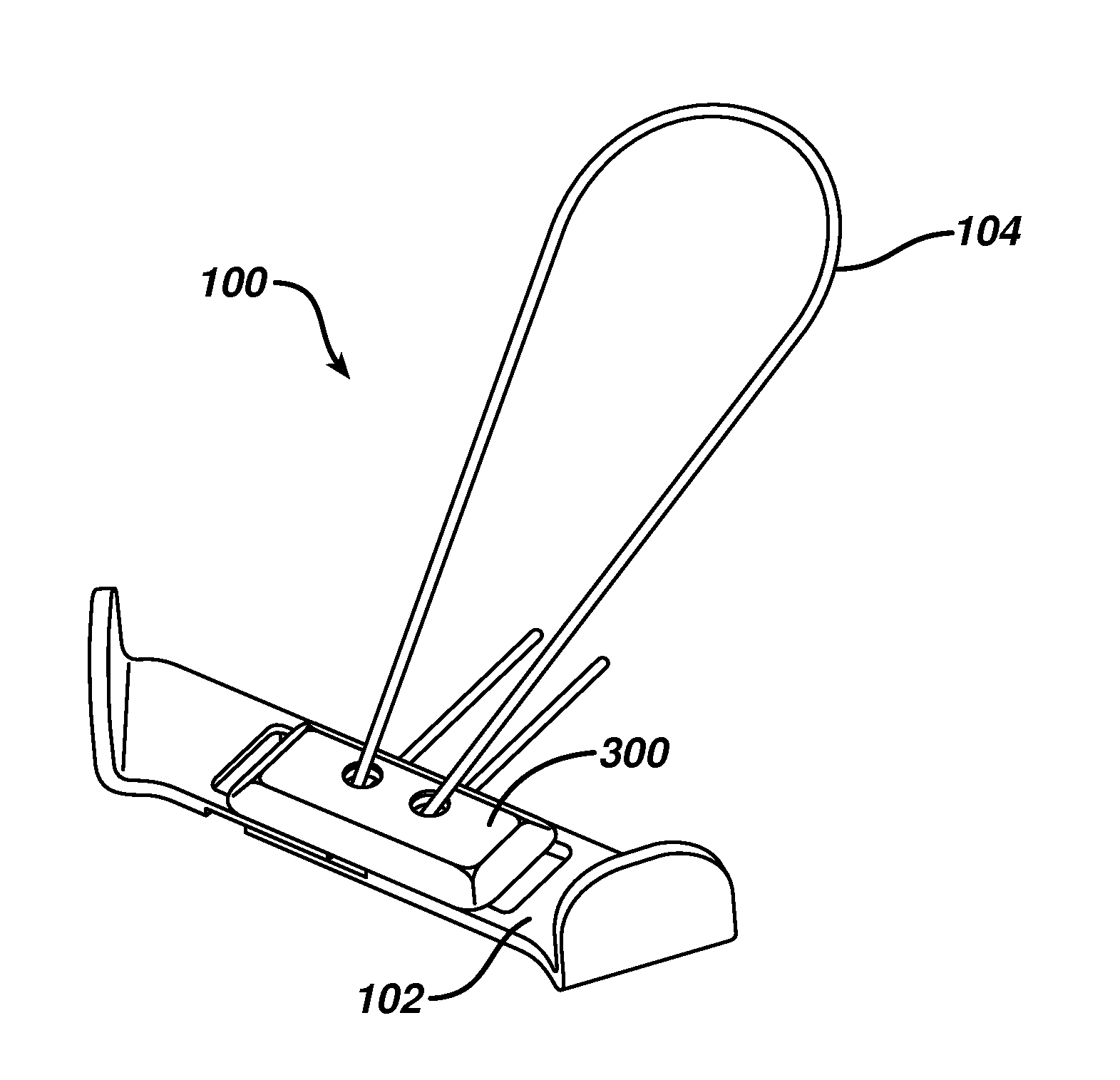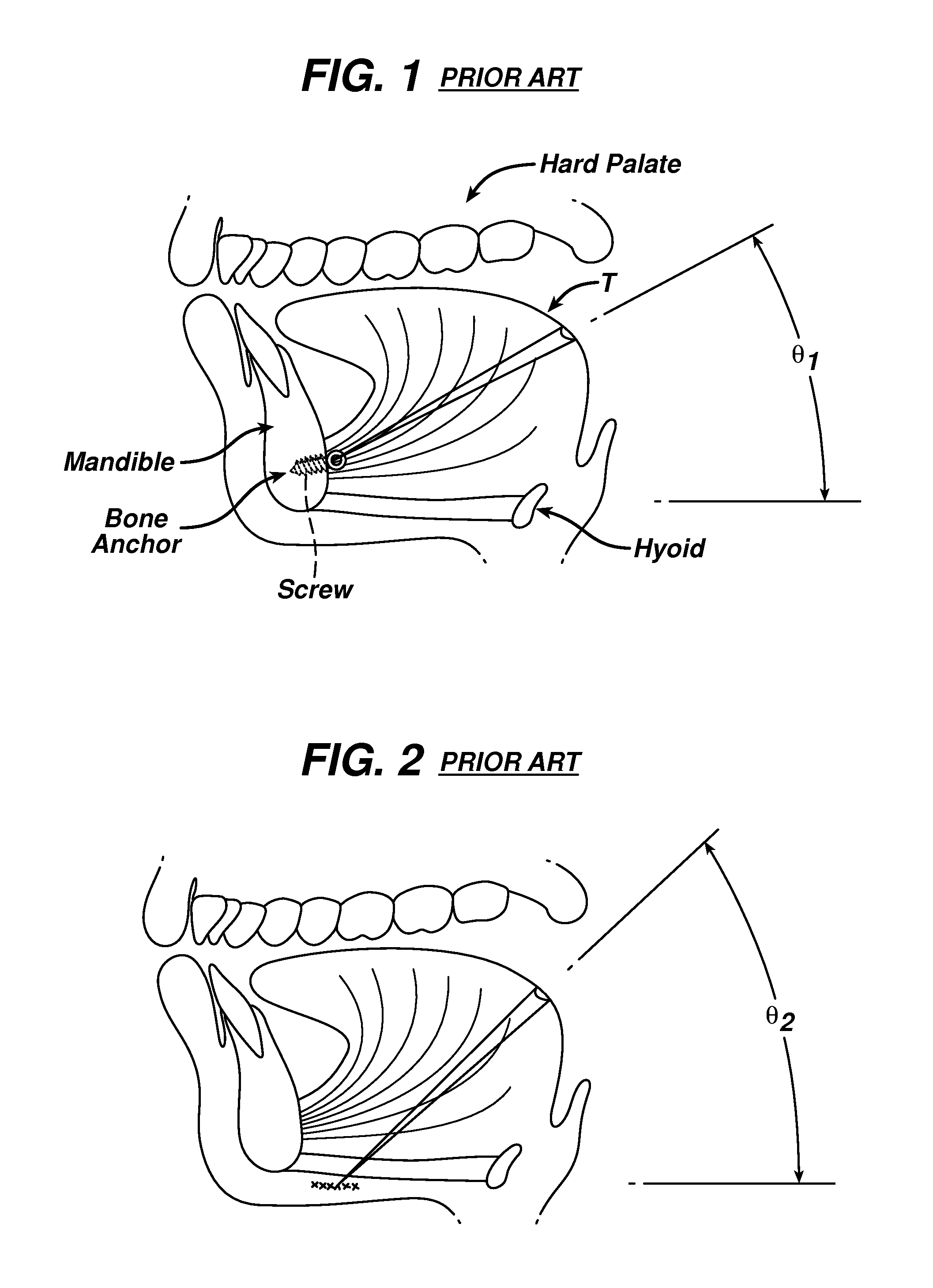Tissue supporting device and method
a technology of supporting device and tongue, which is applied in the field of medical devices, can solve the problems of osa sufferers remaining undiagnosed and untreated, affecting the quality of sleep, and affecting the quality of sleep, and achieve the effect of preventing the rearward movement of the tongu
- Summary
- Abstract
- Description
- Claims
- Application Information
AI Technical Summary
Benefits of technology
Problems solved by technology
Method used
Image
Examples
Embodiment Construction
[0046]Although the tissue supporting device will be described herein with particular reference to supporting or suspending the tongue from the mandible for the treatment of obstructive sleep apnea, it is to be understood that the present invention is not so limited and may have application for supporting or suspending soft tissue from other bony structures and / or for treating other medical conditions.
[0047]FIG. 3 illustrates one embodiment of a tissue supporting device according to the present invention. The tissue supporting device 100 includes an anchor element 102 and a soft tissue supporting element 104 coupled thereto. One embodiment of an anchor element 102 is shown in more detail in FIG. 4, and includes a plate-like element 106 which is defined by a front edge 108 at a front side 109, a rear edge 110 at a rear side 111, and first and second side edges 112, 114. The front edge 108 has a length 11 that is shorter than the length 12 of the rear edge 110. While the particular emb...
PUM
 Login to View More
Login to View More Abstract
Description
Claims
Application Information
 Login to View More
Login to View More - R&D
- Intellectual Property
- Life Sciences
- Materials
- Tech Scout
- Unparalleled Data Quality
- Higher Quality Content
- 60% Fewer Hallucinations
Browse by: Latest US Patents, China's latest patents, Technical Efficacy Thesaurus, Application Domain, Technology Topic, Popular Technical Reports.
© 2025 PatSnap. All rights reserved.Legal|Privacy policy|Modern Slavery Act Transparency Statement|Sitemap|About US| Contact US: help@patsnap.com



